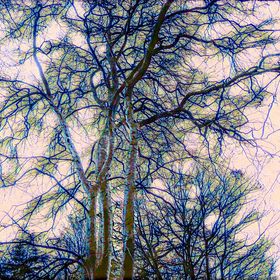A churning of sea water off the coast of Havana, Cuba. The breakers constantly slam up against the ramparts.
A churning of sea water off the coast of Havana, Cuba. The breakers constantly slam up against the ramparts.
Read less
Read less
Views
501
Likes
Awards
Zenith Award
Top Shot Award 22
Peer Choice Award
Absolute Masterpiece
Superb Composition
Outstanding Creativity
Top Choice
Peer Award
Magnificent Capture
Superior Skill
Virtuoso
Top Ranks
Same photographer See allBehind The Lens
Behind The Lens
Location
This photo was taken in Havana, Cuba, during a group photography trip in 2016. The city was facing an unusually ferocious storm that January (supposedly dry season and tourism time). The wind-churned seawater was relentlessly slamming against the stone embankment, threatening to flood the city streets, which it did a few hours later.Time
It happened that my handbag was stolen two days after my arrival in Havana so I had to remain there on Sunday while the group proceeded to the next town on schedule. I had to go to my embassy on Monday before rejoining the group by taxi Monday afternoon. As I went out for a late Sunday lunch at about two o'clock, a storm appeared to be building up its rampage on the city. The churned up seawater rolled in at regular intervals, creating dramatic sights and thunderous slapping and banging noises.Lighting
The sun, westward bound at that hour, was clouded over at times. But the clouds were light and dispersed on that side, so that the sun coming through in irregular patterns gave a soft natural lighting to the raging scene. The dark angry clouds on the eastern side provided a great contrast to the white breakers and the lighthouse. I am tempted to call those moments of lighting 'organic' as nature was 'imitating' some studio lighting for a photo shoot.Equipment
I travel for street photography with only my Nikon D850 and 28-300mm Nikkor lens. Zoom lenses are my most dependable equipment for this kind of photography. I have trained myself to capture street or animal action scenes with handheld cameras, using to advantage the vibration reduction feature in today's cameras. In pictures where sharp focus and contrasts cannot be expected or even desirable, I have been able to eliminate tripod and flash from my equipment. Further, some scenes or subjects require soft edges if the goal is to make it painting-like, or tell a story, which I personally aim for when happening upon interesting scenes or subjects. Tripod and flash are only necessary whenever I dabbled in still object shots and the rare landscapes or micro photography.Inspiration
That moment was an opportunity for me to turn adversity into advantage. I was all alone with a good camera happening upon a scene that was bound to make at least one robust picture with a storyline. The regular tourists were in their hotels waiting for fairer beach weather to get transferred to their cruise ships. My photography group would have loved the opportune moment in front of me. Facing the literally stormy scene I was ready to put to use any photography skill I had so far mastered. Without hesitation I went on a rampage myself capturing the mad motion before quitting for my doubly late lunch.Editing
I did have to lighten up the picture in Photoshop as Raw files often appear 'matte' and needing a little lift to pop out the contrasts. I pushed the exposure to the right to help the scene to show through the dark atmosphere, but not more than necessary. I resist using the contrast button and did not have to push the Highlight anywhere. Sufficient adjustment was applied so that the lighthouse and the dramatic water would stand out against the menacing dark clouds. Those clouds did not need extra manipulation to show off its ferocity. The balancing of light and dark with Curve did the finishing touch.In my camera bag
As a beginner years ago I went for all the equipment I thought necessary for all the photo art I wanted to make. Recovery from some shoulder pain taught me to stop lugging around unnecessary extra weights. I decided to focus on bird and street photography which are motion captures that depend more on observation and quick reflex action. I dedicate the Nikon D 5 and 80-400mm Nikkor lens for bird photography, and Nikon D850 and 28-300 mm Nikkor lens for street captures. I have extra batteries, extra memory cards (Large for raw files), lens cleaning fluid, numerous cleaning cloths, and a plastic camera sleeve for inclement weather. I sometimes bring a short legged foldable tripod for those occasional micro or insect photos.Feedback
For this kind of capture one should have the camera settings ready to shoot continuously and steadily to catch the magic that exists in between the regular patterns of movements. One needs patience to wait for the cycle of the waves, and a willingness to change positions and angles for variations of scene. However, the number one rule is caution: No prize photography is worth risking one's safety. With a zoom lens one can always work from a safe distance. I was aware of the storm building up in the half hour I spent marvelling in awe, and quit when I had made reasonably good shots. I continued to shoot different areas of the storm from the restaurant balcony.



























